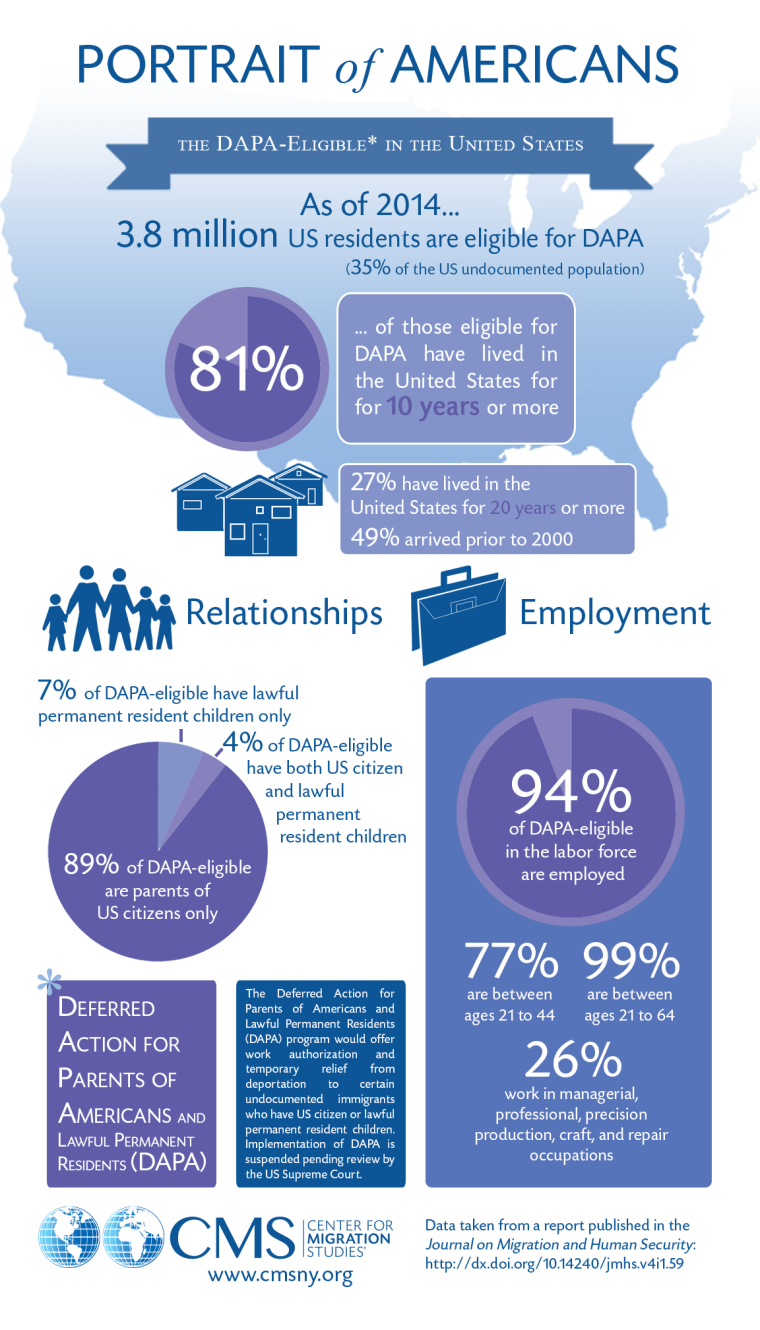Amid the political backdrop and the looming Supreme Court hearings on Pres. Barack Obama's immigration executive actions, a new report shows undocumented immigrants who qualify for these programs are deeply "embedded" in the U.S.
The study by the Center on Migration Studies of New York found that most immigrants who can apply to these programs have been here for decades, have steady employment and have long family ties. In fact, a percentage of them may qualify for family-based immigration visas through marriage or adult citizen children.
“The data in this report shows that these groups have built equities in our country,” said Donald Kerwin, CMS Executive Director and co-author of the report. “Giving them protection would not only enhance their ability to contribute to their communities, but would also keep families together.”
Among the young adults who qualify for DACA (Deferred Deportation for Childhood Arrivals), more than nine-in-ten (95 percent) have a high school degree and almost nine-in-ten are in the labor force and speak English well, or even exclusively.
RELATED: Demand Intensifies for Nonprofit Immigration Lawyers
DACA-eligible immigrants were brought to the U.S. before their 16th birthday. Around 1.26 million undocumented immigrants, known as Dreamers, qualify for DACA. Under the program, teens and young undocumented adults who qualify can apply for the program and lawfully stay in the country, study and work as long as they renew every two years.
Using Census data from 2014, the Center for Migration Studies of New York found almost 3.8 million undocumented immigrants are eligible for DAPA, which is Deferred Action for Parents of Americans and Lawful Residents. That means 35 percent of undocumented immigrants have children who are U.S. citizens or legal permanent residents.
The report states 74 percent of DAPA-eligible immigrants are in the labor force, and 94 percent of them are employed.

The report states 81 percent of DAPA-eligible and 72 percent of DACA-eligible immigrants have lived in the U.S. for more than 10 years.
“An estimated 175,600 US residents are eligible for both DAPA and DACA; that is, they were both brought to the United States as children and have a US citizen or LPR child,” the report explained.
The new report has come out at a time when the DACA and DAPA programs are highly contested. Obama implemented deferred action several years ago claiming that Congress was not acting on comprehensive immigration reform. The lawsuit Texas v. United States claims the President doesn't have the authority to do this; the programs are on hold and the Supreme Court is hearing arguments in the spring. The Republican presidential candidates have said they would repeal both programs; GOP candidate John Kasich hasn't explicitly said so, though his state's attorney general joined the lawsuit against executive actions.
